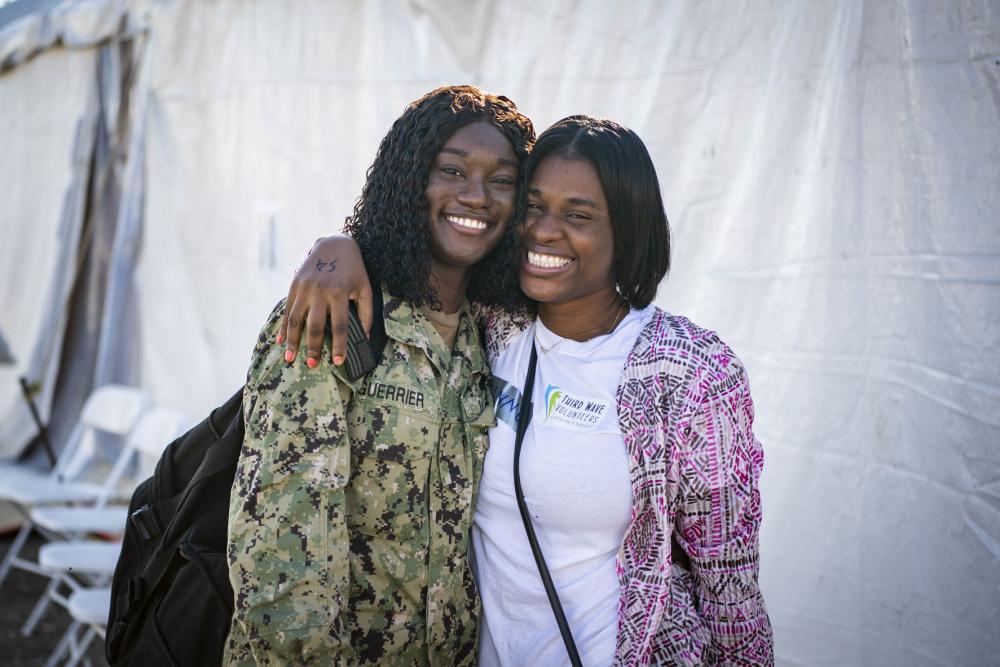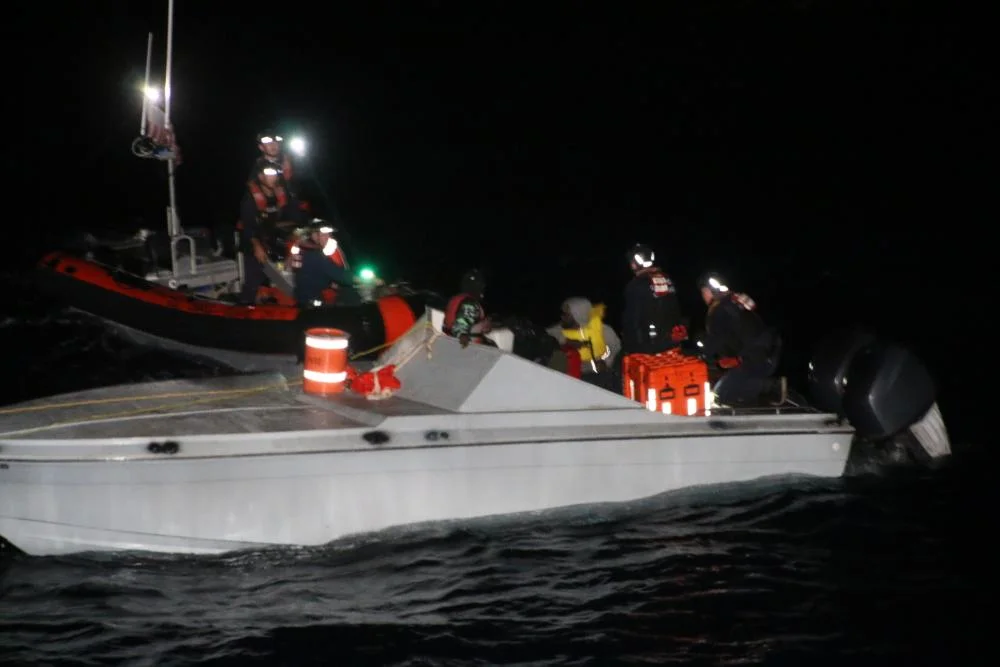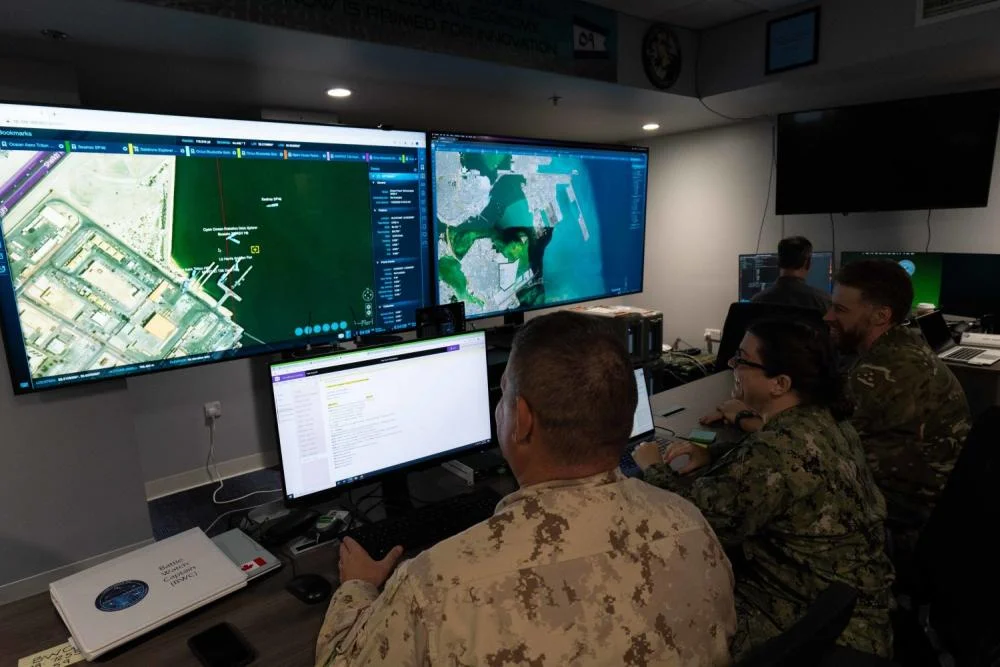DVIDS – News – A Tale of Two Sisters
Story by Mass Communication Specialist 3rd Class Deven Fernandez
JEREMIE, Haiti (Dec. 16, 2022) – In early 2018, 17-year-old Christie Guerrier spent her last few days in Port-au-Prince, Haiti, with those closest to her. They were some of the most heart-breaking days of her life, for she did not know when she would see them again. When the time came, Guerrier felt the warm, Haitian island breeze for the last time, as the country’s landscape disappeared from her view. Guerrier left her friends and family behind, including her sister, Johanne Marceus, a doctor in Haiti, to seek a better future for herself. But she always knew, one day, they would be together again.
Five years later, after completing Navy boot camp and corpsman school she arrived at her first command Naval Medical Center Portsmouth. She expressed how excited she was to be able to put her skills to use.
“I am very grateful,” said Guerrier. “As a new corpsman is the United States Navy, and my first duty station, I get to help people.”
A few months later, Guerrier found herself aboard the USNS Comfort (T-AH 20) supporting Continuing Promise 2022 (CP 22), which was heading to five different countries, the last one being Haiti. She was ecstatic to be able to give back to her country, but potentially getting the chance to see her sister and family again was a miracle. The last memory Guerrier had of her sister was a night out shopping, enjoying the evening together. Although Guerrier tried time and time again to return to Haiti, CP 22 made her dream a reality.
“Despite everything that has happened,” said Guerrier. “It’s great knowing that the Comfort is here to help us Haitians. More so, I get to do all this with my sister by my side.”
On Dec. 15, a U.S. Coast Guard rigid-hull inflatable boat (RHIB) transported Guerrier from the Comfort to the medical site in Jeremie, Haiti. She walked off the RHIB and immediately spotted her sister in the distance, who was eagerly anticipating her arrival. Marceus described seeing her sister again for the first time as a “boom,” since she did not think it would be possible to see Guerrier. Marceus’s sunglasses came off, almost in disbelief at what she was seeing. They ran to one another and held each other in a long-overdue embrace.
The author, Amy Li, says it best, “having a sister is like having a best friend you can’t get rid of. You know whatever you do, they’ll still be there.” Guerrier would agree.
“She is not just my sister. She is my best friend and everything for me,” laughed Guerrier. “Leaving was very painful, but seeing her again, I cannot believe it.”
For the next few days, they worked side-by-side, helping as medical professionals and interpreters to help patients get processed at the medical site and into the right places for the proper care. Since Marceus is a doctor in Haiti and Guerrier is a corpsman, their medical knowledge was vital to help bridge the gap between the patients and the medical team.
“I am doing what I love,” said Marceus. “I love medicine. I love taking care of a people. It is a dream that my passion [could be] combined with this family reunion.”
Although the Comfort has since departed from Haiti, the bond between the two sisters will only strengthen over time. Their love for one another and shared passion for medicine will continue to positively impact the communities they serve.
Since its inaugural mission in 2007, Continuing Promise missions have treated more than 582,000 patients and conducted over 7,000 surgeries in the region. Comfort’s current mission will be the 12th Continuing Promise mission conducted in the Caribbean, Central and South America.
U.S. Naval Forces Southern Command/U.S. 4th Fleet supports U.S. Southern Command’s joint and combined military operations by employing maritime forces in cooperative maritime security operations to maintain access, enhance interoperability, and build enduring partnerships in order to enhance regional security and promote peace, stability and prosperity in the Caribbean, Central and South American region.
Learn more about USNAVSO/4th Fleet at
https://www.facebook.com/NAVSOUS4THFLT and @NAVSOUS4THFLT
| Date Taken: | 12.16.2022 |
| Date Posted: | 12.20.2022 21:45 |
| Story ID: | 435582 |
| Location: | JEREMIE, HT |
| Hometown: | PORT-AU-PRINCE, HT |
| Web Views: | 10 |
| Downloads: | 0 |
PUBLIC DOMAIN
This work, A Tale of Two Sisters, by SN Deven Fernandez, identified by DVIDS, must comply with the restrictions shown on https://www.dvidshub.net/about/copyright.


 Private Internet Access gives you unparalleled access to thousands
of next-gen servers in over 83 countries and each US state. Your
VPN experience will always be fast, smooth, and reliable.
Private Internet Access gives you unparalleled access to thousands
of next-gen servers in over 83 countries and each US state. Your
VPN experience will always be fast, smooth, and reliable.![DVIDS – Images – ACC Command Chief tours Fort Eustis [Image 4 of 4] DVIDS – Images – ACC Command Chief tours Fort Eustis [Image 4 of 4]](https://101veterans.com/wp-content/uploads/2022/12/1671554749_1000w_q75.jpg.webp)



![DVIDS – Images – USCGC Spencer’s crew conducts underway maintenance and training [Image 3 of 3] DVIDS – Images – USCGC Spencer’s crew conducts underway maintenance and training [Image 3 of 3]](https://101veterans.com/wp-content/uploads/2022/12/1671360156_1000w_q75.jpg.webp)





